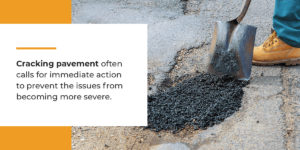Asphalt pavement can make any commercial property look pristine. However, cracks, ruts and other damages threaten that image and may cause issues for people driving or walking over the affected area.
A parking lot free from asphalt damage lets tenants and customers enjoy the property safely for years to come. Once you know how to identify common pavement issues, you’ll be better equipped to fix them with the help of professionals and prevent them from happening again in the future.
10 Asphalt Pavement Issues
The first step to determining solutions to asphalt pavement damage is understanding the various issues that can arise and why they happen.
Common types of asphalt damage include:
1. Alligator Cracking
Asphalt cracks commonly form when heat causes asphalt to expand too quickly and break apart. Water can also worsen the underlying structure if it seeps through small cracks.
Alligator cracks, in particular, are a combination of asphalt structural failure and heavy traffic over the affected area. These are a series of cracks going in every direction that can increase and spread over time.
2. Block Cracking
Block cracks often take the form of rough rectangles typically 1 square foot or more in size that connect to and spread from each other. Block cracking usually happens in areas with little to no traffic, instead forming due to pavement shrinkage as the temperature rises and lowers.
3. Longitudinal Cracking
Longitudinal cracks are long and run parallel to the pavement’s centerline. Many issues can cause longitudinal cracking, including poor joint construction, asphalt shrinkage, structural damage and improper pavement installation.
 4. Edge Cracking
4. Edge Cracking
Edge cracks are a type of longitudinal crack that occurs 1 or 2 feet within the pavement’s outer edges. Pavement edges that lack support often see this type of damage. Edge cracks can also form from heavy traffic, poor drainage conditions or a buildup of vegetation and debris.
 5. Joint Reflection Cracking
5. Joint Reflection Cracking
Joint reflection cracks can happen when flexible asphalt pavement is overlaid on top of a rigid pavement type like concrete. These cracks happen right over the underlying joints, often resulting in deep, linear patterns where the original surface’s joints were.
6. Potholes
When an area of asphalt erodes, it leaves a pothole in the surface. In places with warm climates, like Florida, strong heat and sunlight can cause cracks in the asphalt where water can seep through and weaken the underlying asphalt structure. When cars drive over these areas, they cause the cracks to spread, which causes a deep hole over time.
7. Depressions
Also called birdbaths, depressions are low spots in the pavement that can happen after poor asphalt construction, or by internal pavement layers settling. Deep depressions can fill with water, which can seep down through any cracks and cause other issues below the surface.
 8. Rutting
8. Rutting
Rutting is a type of linear asphalt surface depression in the wheelpath. Heavy traffic over the same spot can cause the area to deform layer by layer, especially if the asphalt mixture is weak or the pavement is too thin.
9. Raveling
Raveling is when the aggregate particles from the asphalt surface wear away, usually because of hardened asphalt that’s poor quality or was laid improperly. Raveling often happens in high-traffic areas, which can worsen its effects. This erosion leaves behind a textured, uneven pavement surface that results in loose debris and pools of standing water that can create additional structural issues.
 10. Shoving
10. Shoving
Asphalt shoving appears as ripples across the pavement and often occurs at places with severe stress that go perpendicular to the direction of traffic, such as intersections. Shoving can also happen because of excess asphalt or fine aggregate, a weak pavement base or asphalt that’s too soft.
How to Fix Asphalt Pavement Damages
After identifying what issues a commercial parking lot has, the next step is knowing how to fix asphalt cracks, potholes, shoving and more.
- Cracks: Cracking pavement often calls for immediate action to prevent the issues from becoming more severe. Patching is a cost-effective way to fill in the gaps and prevent the cracks from expanding. You may also opt for an asphalt overlay to patch an extensive area of cracks. However, if the cracks are widespread and deep enough, asphalt resurfacing could be your best option.
- Potholes and depressions: Repairing pavement holes involves filling cracks to prevent additional water damage, then completely filling in the holes so the area is flush with the rest of the asphalt surface.
- Rutting: Similarly to crack and pothole fixes, minor rutting can usually be addressed by filling the depressed area and adding an overlay to make the entire surface smooth again. If the asphalt has an especially weak underlying structure, completely resurfacing the area might be necessary.
- Raveling: Since pavement with raveling is usually not salvageable, the best solution is to remove the affected surface and patch the area or install an overlay.
- Shoving: Uneven, rippled pavement can usually go back to normal with a series of patches.
For all of the above issues, professional asphalt repair and replacement services are crucial for getting the job done right. Professionals have the best solutions for any issues and can make a commercial area look like new while helping you prevent additional asphalt damage.
Choosing ToriTom Services
If you’re looking for professional asphalt repair, trust ToriTom Services to suit all your needs. ToriTom Services offers an array of pavement solutions for commercial asphalt and concrete, including:
- Patching: Patches are the ideal solution for small issues you want to keep from turning into large problems. Patching services include pouring 1 to 2 inches of hot asphalt into any gaps to fill in holes and stop cracks from growing. Opting for routine patching services is the best way to keep up with ongoing property maintenance, as patches are quick and easy to install.
- Overlaying: For more extensive issues, such as cracks that span an entire lot, overlays are a quality option. Overlays cover a whole area with fresh pavement and can help increase a commercial lot’s lifetime, even if it’s accumulated numerous issues over the years.
- Resurfacing: Extensive damages require in-depth repairs. Resurfacing involves removing and replacing the top layer of pavement, helping you address deeper issues and giving you a lot that’s like new without doing a complete replacement.
Contact Us Today
Whatever commercial lot issues you’ve encountered, ToriTom Services has you covered. Our knowledgeable and experienced team wants to help you maintain the parking lots you manage, for the good of your tenants and community. We provide a range of high-quality services at affordable prices, as well as maintenance plans and expertise so that you can easily stay on top of repairs.
To learn more about our asphalt and concrete repair services or receive a free quote, call us at 941-932-2593, or fill out our contact form!
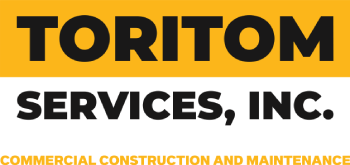
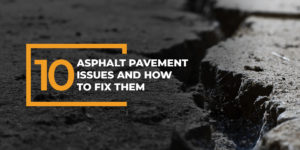



 4. Edge Cracking
4. Edge Cracking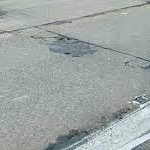 5. Joint Reflection Cracking
5. Joint Reflection Cracking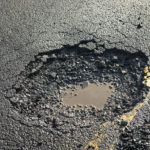

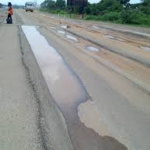 8. Rutting
8. Rutting
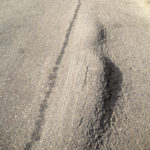 10. Shoving
10. Shoving